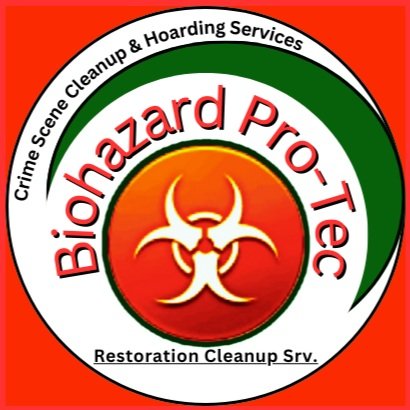Biohazard Pro-Tec Hoarding cleaning services in the San Francisco Bay Area offer specialized assistance in restoring homes impacted by hoarding.
Restoring homes impacted by hoarding is a multifaceted and delicate process beyond mere cleaning. To provide specialized assistance in restoring homes affected by hoarding, it's essential to adopt a holistic approach that integrates mental health support, safety protocols, and sustainable long-term strategies. Here's a comprehensive breakdown of how to enhance these services: Learn more.
I. Emphasizing the Crucial Role of Empathy and Psychological Support. This is arguably the most crucial aspect. Hoarding disorder is a recognized mental health condition, and a compassionate, non-judgmental approach is paramount for successful and lasting change.
Integrate Mental Health Professionals:
Mandatory Collaboration: Establish strong partnerships with therapists, psychologists, and social workers specializing in hoarding disorder; this should be a standard part of the service, not an optional add-on.
On-site Support: For major cleanouts, having a mental health professional present can help manage distress and guide the individual's decision-making.
Pre- and Post-Cleanup Therapy: Encourage access to Cognitive Behavioral Therapy (CBT), Dialectical Behavior Therapy (DBT), and other evidence-based therapies before, during, and after the cleanup. These therapies address the underlying behaviors and beliefs.
Motivational Interviewing: Train cleanup teams in motivational interviewing techniques to encourage individuals to participate and make their own choices rather than imposing decisions.
Respectful Communication and Process:
Neutral Language: Train staff to avoid judgmental terms like "clutter" or "mess." Instead, use neutral, non-threatening language.
Involve the Hoarder: Whenever possible, involve the individual in decision-making at every stage; this fosters a sense of control and reduces resistance.
"Fear Ladder" Approach: Implement strategies like "fear ladders" to help individuals gradually confront their anxiety about discarding items, starting with less emotionally charged possessions.
Small, Achievable Goals: Break down the cleanup into minimal, manageable tasks to prevent overwhelming the individual and build a sense of accomplishment. Celebrate small victories.
Family and Support System Engagement:
Family-as-Motivators Training: Offer training for family members to help them understand hoarding disorder and learn effective communication and support strategies.
**Support Groups:** Provide information and resources for local and online support groups designed for individuals with hoarding disorder and their families.
**II. Enhancing Safety and Remediation Practices:**
Hoarded homes often present significant health and safety risks. As a result, specialized assistance should primarily focus on addressing these concerns.
**Comprehensive Hazard Assessment:**
Initial Evaluation: Conduct a thorough initial assessment to identify all potential hazards: structural damage (due to weight or pests), biohazards (mold, animal waste, rotting food, infestations), fire risks, electrical issues, and trip hazards.
Professional Expertise: Ensure teams include biohazard remediation, pest control, and structural integrity assessment specialists.
Advanced Equipment and Protocols:
Personal Protective Equipment (PPE): Mandate and provide appropriate PPE for all team members (e.g., hazmat suits, respirators, heavy-duty gloves, eye protection).
Specialized Cleaning Tools: Utilize industrial-grade cleaning equipment, air purifiers, and specialized disinfectants for thorough sanitization.
Hazardous Material Handling: Implement strict protocols for safely removing and disposing of biohazardous materials, sharps, and other dangerous items following local regulations.
Strategic Cleanup Methodology:
Safety First: Prioritize clearing pathways to exits and addressing immediate safety concerns before aesthetic improvements.
Systematic Approach: Employ systematic decluttering methods, such as the "Four-Box Method" (Keep, Donate/Sell, Trash, Store) or the "One-Touch Rule," to guide decision-making.
Top-to-Bottom Cleaning: Work methodically from top to bottom and back to front to ensure thorough cleaning and prevent recontamination.
Staging Area: Designate a clean "staging area" for sorting and evaluating items.
III. Implementing Sustainable Long-Term Solutions
Without ongoing support and strategies, relapse is highly likely.
Maintenance Plans and Routines:
"One-In, One-Out" Rule: Help individuals establish routines and rules, such as the "one-in, one-out" rule, to prevent re-accumulation.
Regular Check-ins: Offer follow-up visits or virtual check-ins to monitor progress and provide ongoing encouragement.
Professional Organizers: Connect individuals with professional organizers who specialize in maintaining organized spaces for those with hoarding tendencies.
Skill-Building Workshops:
Decision-Making Skills: Offer workshops focused on improving decision-making skills related to possessions.
Organizational Strategies: Teach practical organizational techniques and systems tailored to the individual's needs.
Coping Mechanisms: Help individuals develop healthy coping mechanisms to manage anxiety and distress that often lead to acquiring and saving behaviors.
Resource Connection:
Community Resources: Provide a comprehensive list of local resources, including therapy services, support groups, donation centers, and junk removal services.
Digital Alternatives: Encourage the adoption of digital solutions for documents, photos, music, and other items to reduce physical clutter.
By integrating these specialized elements, assistance in restoring homes impacted by hoarding can move beyond a mere cleanup service to become a truly transformative and sustainable intervention.
San Francisco, CA, USA / The Bay Area

